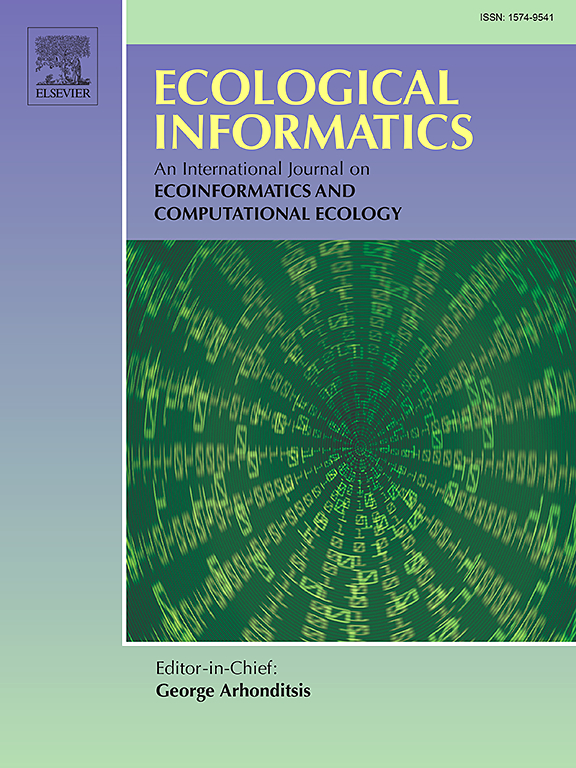The ‘everything is everywhere’ framework: Holistic network analysis as a marine spatial management tool
IF 5.8
2区 环境科学与生态学
Q1 ECOLOGY
引用次数: 0
Abstract
The North Sea hosts numerous man-made structures, some recently installed and others nearing end-of-life, with decisions about their decommissioning at the centre of current debate. Further there are plans for significant expansion of structures relating in particular to offshore wind energy. Here, using a combination of hydrodynamic modelling, particle tracking, and graph network analysis, we evaluate connectivity under two scenarios: existing structures – releasing particles from cells where structures are currently present – and “everything is everywhere” – releasing particles from every cell in the domain. Additionally, we introduce a Connectivity Importance Index (CII) to assess both current and potential future connectivity within the region. The CII under the ‘everything is everywhere’ scenario revealed cells with high potential connectivity that align with, but also extend beyond, those identified under the existing structures scenario, pointing to potentially valuable regions for future structure placement. The relocatable methodology described in this paper allows for the quantification of potential networks, applicable with or without existing habitat data, offering valuable insights for ecologically coherent marine spatial management strategies.

“万物无所不在”框架:作为海洋空间管理工具的整体网络分析
北海有许多人造设施,其中一些最近才安装完毕,另一些已接近报废,有关它们退役的决定是当前争论的焦点。此外,还计划大力扩大特别是与海上风能有关的结构。在这里,我们结合了流体动力学建模、粒子跟踪和图网络分析,评估了两种情况下的连通性:现有结构——从当前存在结构的细胞中释放粒子——和“万物无处不在”——从域中的每个细胞中释放粒子。此外,我们引入了连通性重要性指数(CII)来评估该地区当前和潜在的未来连通性。“万物无所不在”情景下的CII揭示了具有高潜在连通性的细胞,这些细胞与现有结构情景下确定的细胞对齐,但也超出了这些细胞,指出了未来结构放置的潜在价值区域。本文中描述的可重新定位方法允许对潜在网络进行量化,无论是否适用现有栖息地数据,为生态连贯的海洋空间管理策略提供有价值的见解。
本文章由计算机程序翻译,如有差异,请以英文原文为准。
求助全文
约1分钟内获得全文
求助全文
来源期刊

Ecological Informatics
环境科学-生态学
CiteScore
8.30
自引率
11.80%
发文量
346
审稿时长
46 days
期刊介绍:
The journal Ecological Informatics is devoted to the publication of high quality, peer-reviewed articles on all aspects of computational ecology, data science and biogeography. The scope of the journal takes into account the data-intensive nature of ecology, the growing capacity of information technology to access, harness and leverage complex data as well as the critical need for informing sustainable management in view of global environmental and climate change.
The nature of the journal is interdisciplinary at the crossover between ecology and informatics. It focuses on novel concepts and techniques for image- and genome-based monitoring and interpretation, sensor- and multimedia-based data acquisition, internet-based data archiving and sharing, data assimilation, modelling and prediction of ecological data.
 求助内容:
求助内容: 应助结果提醒方式:
应助结果提醒方式:


